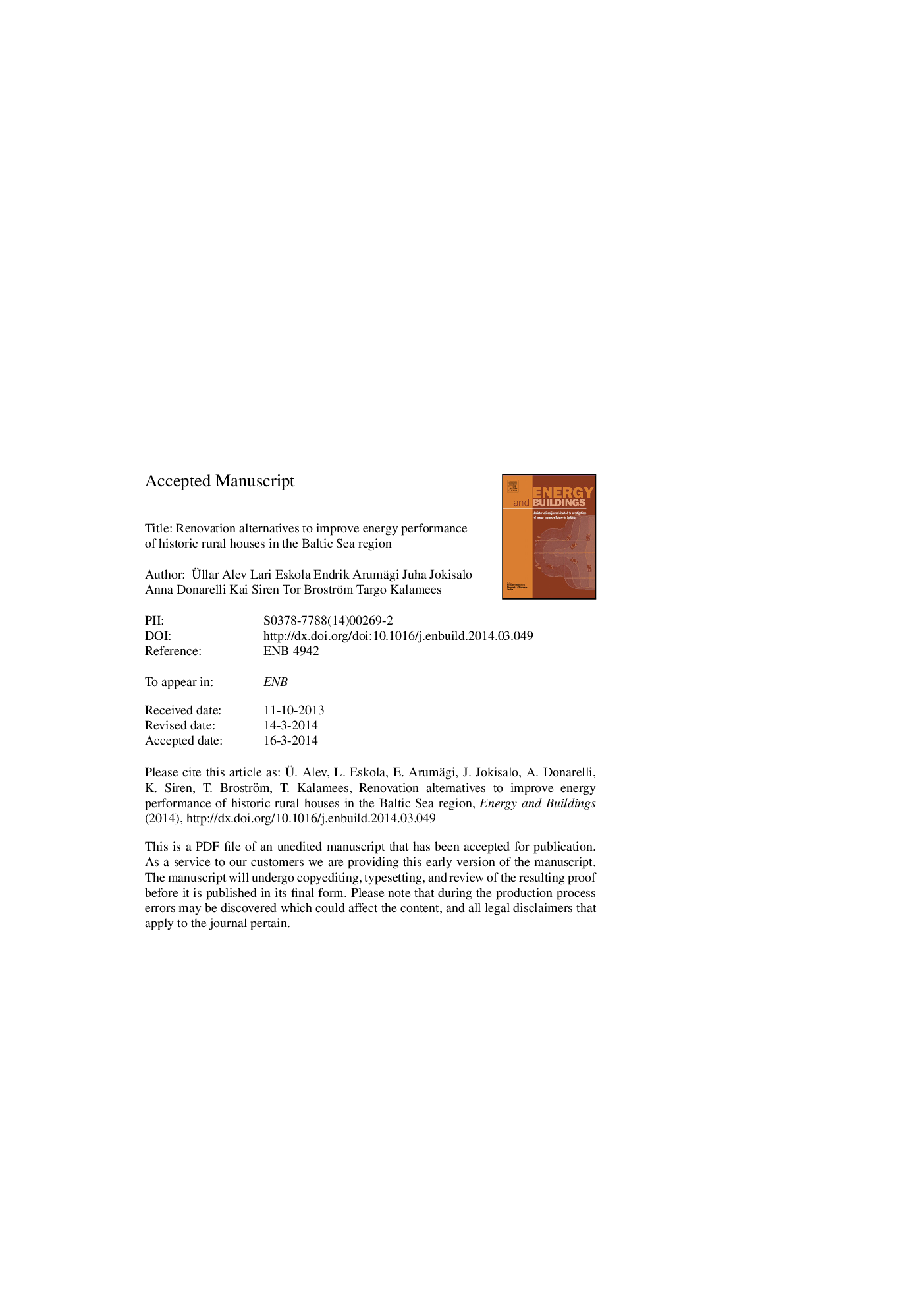| Article ID | Journal | Published Year | Pages | File Type |
|---|---|---|---|---|
| 6733482 | Energy and Buildings | 2014 | 43 Pages |
Abstract
This paper analyses renovation alternatives to improve energy performance of historic rural houses in three countries (Estonia, Finland, Sweden) in the Baltic Sea region (cold climate). The study was conducted by a combination of field measurements and simulations. Indoor climate, typical houses and structures as well as the current condition and need for renovation were determined by field measurements. Based on field measurements, indoor climate and energy simulation models were validated and used to calculate energy use for different renovation measures. Energy renovation packages were calculated for different scenarios (minimal influence on the appearance of the house, improvement of thermal comfort, improvement of building service systems) for different energy saving levels. The analysis showed that the improvement of building service systems and the energy source holds the largest energy saving potential. The building envelope of old rural houses needs improvement also due to high thermal transmittance and air leakage. The insulation of the external wall has the largest single energy saving potential of the building's envelope. The results show how energy savings depend on energy saving targets, typology of the building, thermal transmittance of original structures, and building service systems.
Related Topics
Physical Sciences and Engineering
Energy
Renewable Energy, Sustainability and the Environment
Authors
Ãllar Alev, Lari Eskola, Endrik Arumägi, Juha Jokisalo, Anna Donarelli, Kai Siren, Tor Broström, Targo Kalamees,
